Do you always feel that your life is particularly disordered before your period? Then you may be a potential group of PMS. PMS most often occurs in women aged 20-30. Many women suffer from menstrual syndrome every month, but they are often misunderstood as intolerant and fussing. But Apple’s big data confirms that menstrual syndrome really exists, and more than 60% of women, regardless of age or ethnic group, are disturbed by PMS physically and mentally.
What is Premenstrual syndrome?
Premenstrual syndrome is a collective term for physical and mental disorders 7 to 10 days before the onset of menstruation, and sometimes persists for the first 3 days of the onset of menstruation. Refers to complex psychological, physical, and behavioral changes that occur during the last week of the menstrual cycle and resolve spontaneously when a new menstrual cycle begins, including: psychological symptoms (anxiety, nervousness, depression, confusion, irritability, mood swings, drowsiness, sleep disturbance), and physical symptoms (breast tenderness, bloating, appetite changes, weight gain, headache, abdominal pain, edema of extremities, fatigue, gastrointestinal symptoms, skin problems)…etc
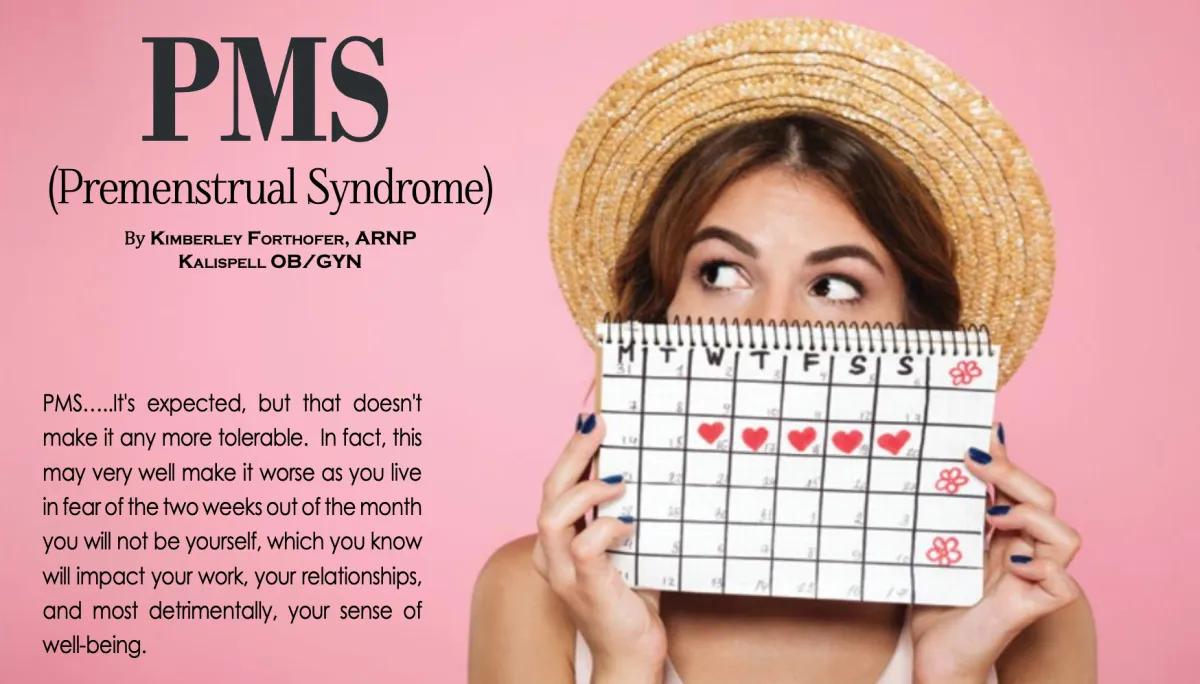
What are the symptoms of PMS?
There are many symptoms of PMS, and whether it causes distress or discomfort to the patient is also very subjective, but generally it can be analyzed from three aspects, and the three aspects also affect each other.
Psychological level:
Mostly emotional reactions, there will be tension, anxiety, irritability, emotional fluctuations, and even depression. Some people get up early in the morning and feel full of energy. After only 1 or 2 hours, their mood falls to the bottom, or it is easy to lose their temper with the people around them.
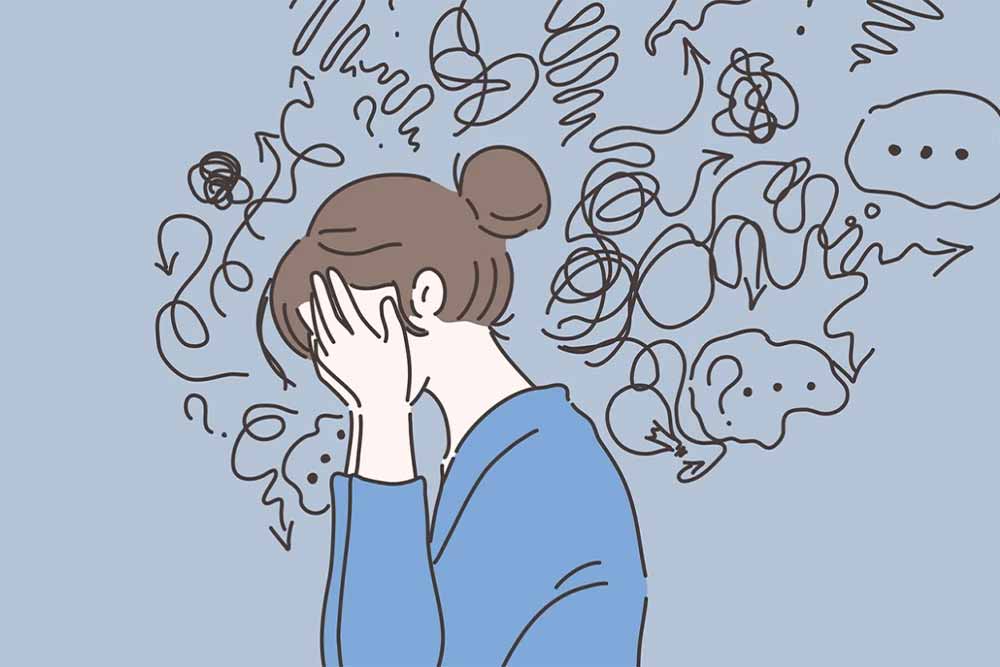
Physiological symptoms:
Headache, dizziness, nausea and vomiting, breast swelling and pain, abdominal distention, edema of hands and feet, diarrhea.
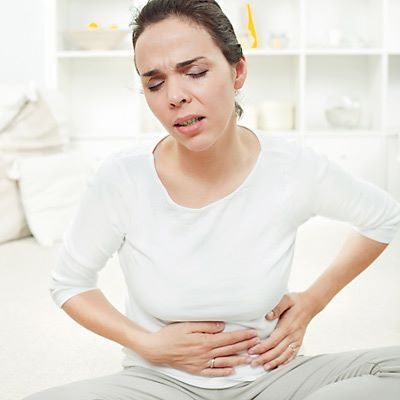
Behavioral manifestations:
Lack of energy, reluctance to go out, inability to concentrate.
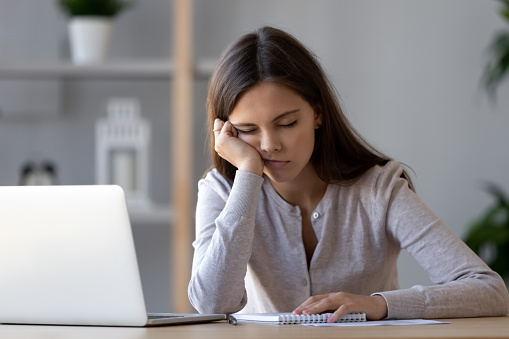
Bored at office work funny sleepy woman worker resting on hand sleeping at workplace, unmotivated lazy teen student feeling drowsy falling asleep near laptop, boring job and lack of sleep concept
PMS symptoms can interfere with daily life, but most people’s symptoms improve within 4 days of starting their period.
If the symptoms of PMS are very severe each month, including more severe depression, mood swings, irritability, anxiety, tension, decreased concentration, or other strong and unbearable emotions, and even seriously affect the function of life, then Will develop into more severe Premenstrual Dysphoric Disorder (PMDD) and
premenstrual exacerbation (PME)
- Premenstrual Dysphoric Disorder (PMDD): Similar to PMS, but with more severe symptoms, including an emotional level. Past research has shown that about 3 to 8 percent of women with PMS symptoms will have PMDD. Some people’s emotional ups and downs can interfere with daily routines, sometimes as early as 2 weeks before menstruation.
- Premenstrual exacerbation (PME): refers to women who already suffer from anxiety, bipolar disorder or depression, and their mental health deteriorates significantly in the days or even weeks before menstruation. Suicidal tendencies. Previous studies have also pointed out that up to 41.9% of patients with anxiety disorders will have symptoms worsening before menstruation.
What caused PMS?
At present, the reasons for the occurrence of PMS are still unclear, and can be analyzed from many aspects, but the possible main reasons include:
- Changes in the hormonal cycle: PMS mostly occurs when ovulation occurs. The physiological period is divided into two periods, the follicular phase and the luteal phase. During the follicular phase, the body will secrete estrogen and it will pile up higher and higher. At this time, the pituitary gland will release the command to ovulate, the luteinizing hormone will be secreted, and then ovulation will occur. At this time, the corpus luteum in our body will be Progesterone will be produced, and the original estrogen will continue to be at its peak. When ovulation occurs, estrogen will be in a stagnant state. When the corpus luteum continues to secrete progesterone, at this time, both estrogen and progesterone are at their peak. If there is no conception, the corpus luteum will shrink, and menstruation will come 14 days after ovulation. At the same time, estrogen and progesterone also decreased, and this gap from the peak decline is considered to be the biggest factor causing PMS.
- Changes in serotonin in the brain: The mainstream view in recent years is that the amount of serotonin secreted in the brain responsible for nerve conduction changes, which in turn induces PMS symptoms. Insufficient serotonin can easily make women depressed, tired, overeating or insomnia before menstruation.
- Unbalanced nutrition: Studies have pointed out that high fat or too much sugar and salt, insufficient vitamin B6, calcium deficiency and other nutritional disorders will aggravate PMS.
- Pre-existing depression symptoms: Some women with severe PMS may have undiagnosed depression. However, depression alone does not cause all PMS symptoms.
According to information from the Victorian Department of Health and Human Services, factors that may affect the severity of PMS symptoms include:
- Pressure
- Mental state
- Poor physical health
- Overweight or obese: Women with a BMI over 30 are three times more likely to have PMS than normal-weight women
- Smoking: Women who smoke are twice as likely to have severe PMS symptoms compared to non-smokers
- Genetic makeup
- Culture and social environment
Who is prone to PMS?
-
25-35 year old female
- Those with menstrual irregularities
- Those are overweight
- Those under physical and mental stress or lack of exercise
- Those with depression or anxiety
- Those with family history, mothers or sisters with PMS
- Those taking birth control pills or hormonal drugs
- Nutritional imbalance
- Endocrine disorders
What are the screening methods for PMS?
According to the definition of the American College of Obstetricians and Gynecologists, the diagnosis of PMS must be met in three consecutive menstrual cycles, five days before menstruation, at least one emotional or physiological symptom occurs, which affects the patient’s life, including social, work, etc. , and symptoms resolved within four days after the end of menstruation.
How to ease PMS?
-
Adjust the hormonal mechanism
Taking contraceptives regularly According to the mechanism of hormones, doctors will give patients a try, that is, taking contraceptives, so that patients do not ovulate, it will make the fluctuations of estrogen and progesterone not so large, and menstruation will be the same It will come (but won’t ovulate), some people’s PMS symptoms won’t come back, but there will still be people who don’t. Another method that can be tried is to supplement calcium during the luteal phase. There have also been successful cases. If it does not work, it may be necessary to treat the symptoms.
-
Medications may be considered
Often physicians will treat patients’ complaints. Some physicians prescribe diuretics to help patients eliminate edema and relieve menstrual discomfort through natural metabolism. While taking diuretics, physicians will advise patients to eat a light diet and avoid eating too salty, because too much salt intake can make people want to drink more water. Non-steroidal anti-inflammatory drugs (NSAIDs) can inhibit inflammation and local pain. They can be purchased at pharmacies or prescribed by physicians. Common NSAIDs include aspirin, ibuprofen, and naproxen. If non-steroidal anti-inflammatory drugs and diuretics are taken at the same time, the burden on the kidneys is heavy, so remember to consult your doctor.
What alternative treatments are helpful for PMS?
-
Adjust your diet

In the diet, you can take in more calcium, magnesium, and vitamin B6. In addition, it is also recommended to eat more ginkgo biloba, “chasteberry” containing natural phyto lutein, and essential fatty acids such as Omega3. Chasteberry, also known as Chastity tree or Vitex, is a tree of the Verbena family, up to 6 meters tall, distributed in the Mediterranean region, Central Asia and North America, the main compounds are glycosides, flavonoids, diterpenes, steroids and linoleic acid…etc

Since ancient times, this plant has been considered an important plant for the treatment of disorders of the female reproductive system, including: menstrual disorders (amenorrhea, dysmenorrhea), premenstrual dysphoric disorder, luteal insufficiency, hyperprolactinemia, dysmenorrhea Pregnancy, acne, menopause, cyclic breast pain.
A systematic literature review and meta-analysis (3 randomized, double-blind, placebo-controlled trials with a total of 520 PMS participants) found that compared with placebo a 2.57 times higher rate of symptom relief (measured by total symptom score or PMS diary score).
In addition, a period of time before menstrual cramps, patients should avoid eating irritating food, first avoid excessive salt intake, avoid pickled food, not only reduce limb edema, but also reduce the burden on the heart, while drinking coffee, tea, cola, etc. Drinks containing caffeine can easily make people irritable and affect sleep, so try to avoid them. In addition, alcoholic beverages and spicy foods should be avoided.
-
Take more exercise

The hypothesis that exercise promotes health and longevity is not new. Organized exercise to promote health has been documented as early as 2500 BC.
A modest increase in energy expenditure due to physical activity (approximately 1000 kcal per week) or a 1 MET (metabolic equivalent) increase in physical fitness was associated with an approximately 20% reduction in mortality in both men and women.
Maintaining adequate physical activity helps the body fight stress, and the recommended amount is at least 30 minutes at least 5 days a week.
-
Aromatherapy
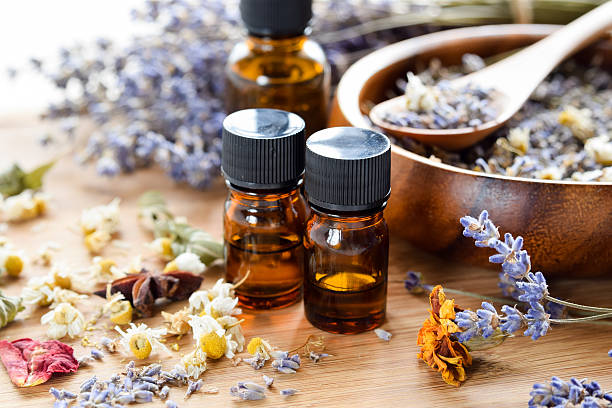
dried herbs with essential oils using lavender and chamomile
Aromatherapy refers to a medicinal or therapeutic approach in which essential oils extracted from plants are absorbed through the skin or olfactory system. While more than 40 plant derivatives have been identified for therapeutic use, lavender, eucalyptus, rosemary, chamomile and peppermint is the most commonly used extract.
Aromatherapy is most often used topically, and when applied topically, it is usually added to a carrier oil and used for massage, or inhaled through a humidifier, or soaked in gauze and placed near the patient.
A systematic literature review and meta-analysis (8 randomized controlled trials involving 295 participants with moderate-to-severe PMS) found that aromatherapy (inhalation) can reduce the physical and psychological benefits of PMS Severity of symptoms, such as anxiety, depression, fatigue, and improvement in total PMS symptom scores.
-
Reflexology
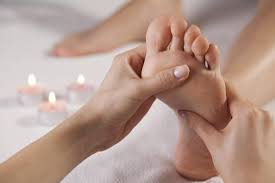
Reflexology is a non-pharmacological complementary therapy that applies appropriate pressure to specific acupuncture points and areas on the feet, hands or ears that correspond to different body organs and systems and are important to the overall health of the organs and the person bringing about beneficial effects.
The most common of these is the use of the thumb and index finger to stimulate certain acupuncture points on the feet. Possible benefits include: improving blood circulation, removing toxins, stimulating lymphatic drainage, and strengthening the immune system.
A systematic literature review and meta-analysis (9 randomized controlled trials with 475 PMS participants) found that regional reflexology was helpful in reducing the overall score of PMS , physical and psychological symptoms.
In addition, the increase in massage time in each session also increases its therapeutic efficiency.
When should I seek medical attention?
Whether it is physical or psychological discomfort, women should seek medical attention if they feel that their PMS symptoms are obvious and difficult to improve with simple methods. Your doctor will help you decide if you need to adjust your daily routine or give you treatment for your mental health.
